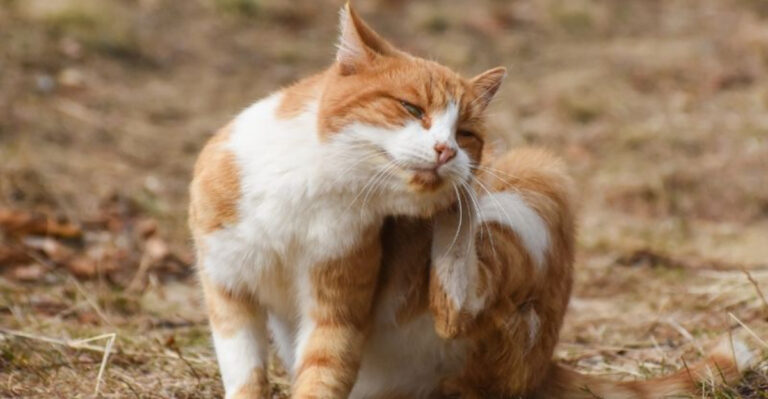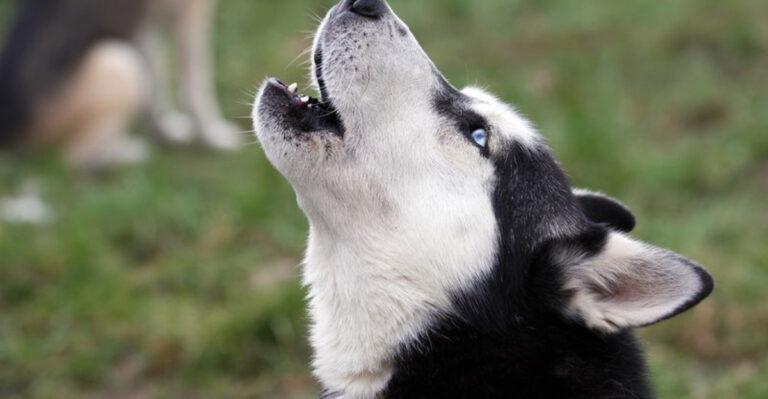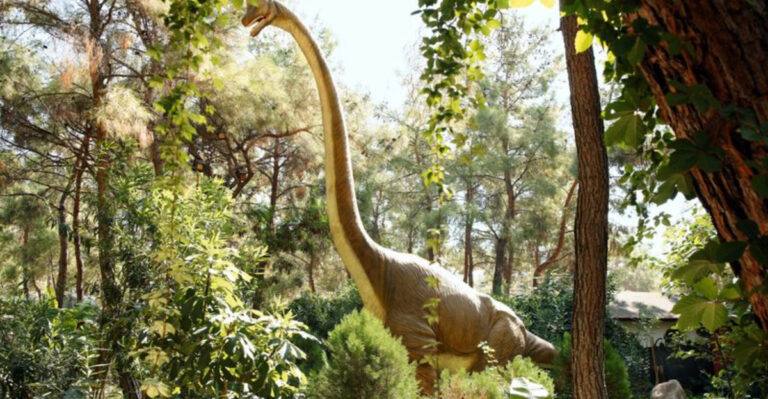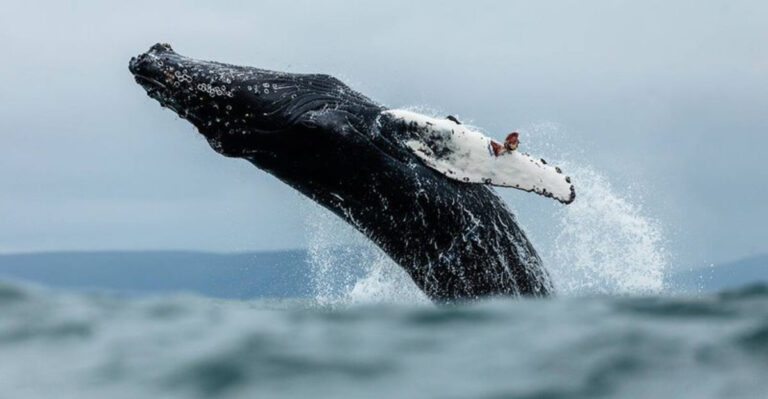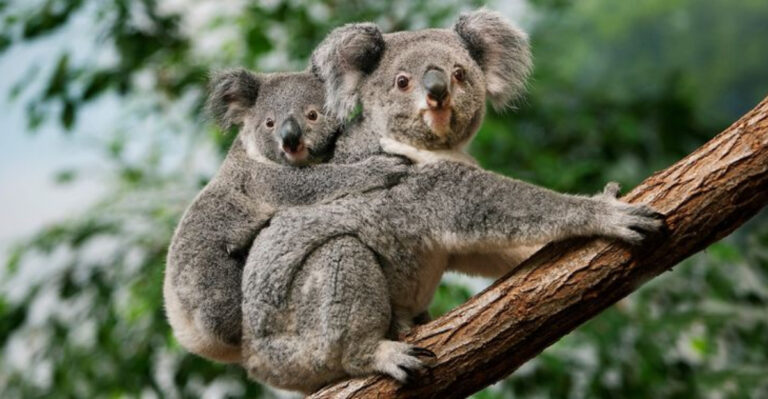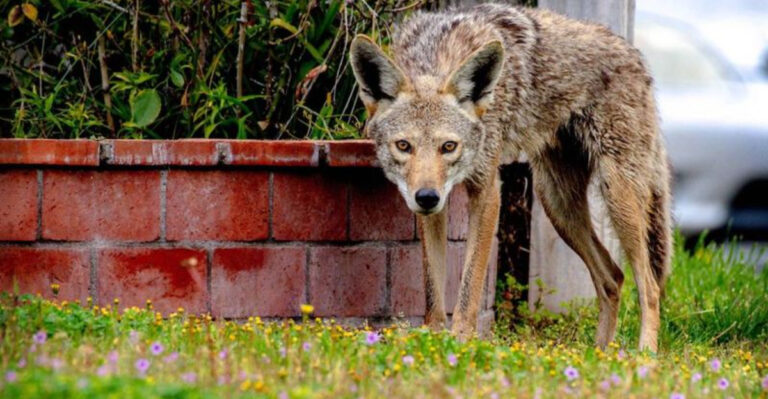13 Amazing Facts About Arctic Wolves
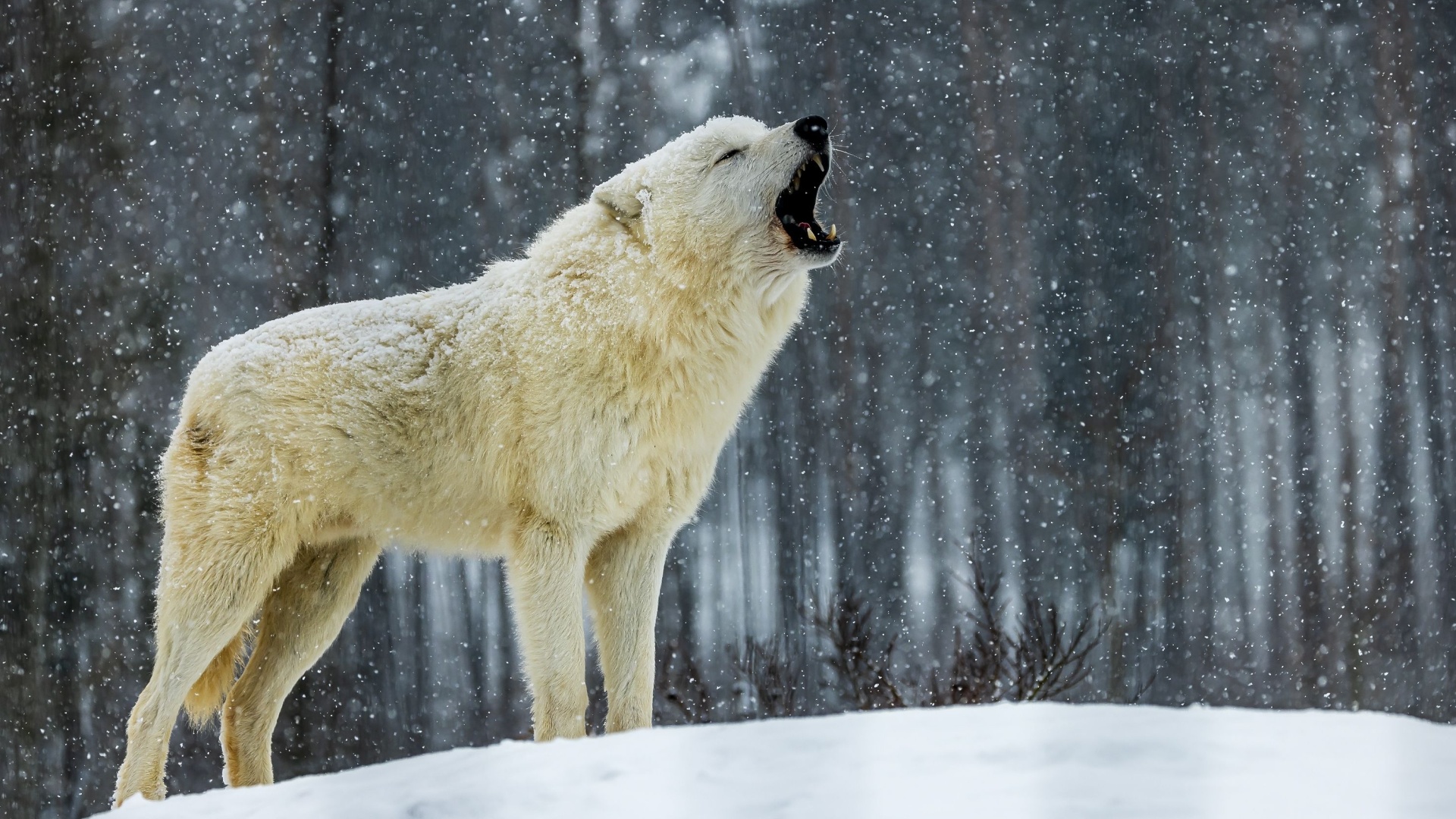
Arctic wolves are fascinating creatures, capturing the imaginations of animal lovers and scientists alike.
Known for their stunning white coats and incredible adaptability to some of the planet’s harshest conditions, these wolves roam the icy landscapes of the Arctic.
Let’s explore some amazing facts about these mysterious canines, uncovering both their unique survival skills and intriguing social behavior.
1. Unique Camouflage
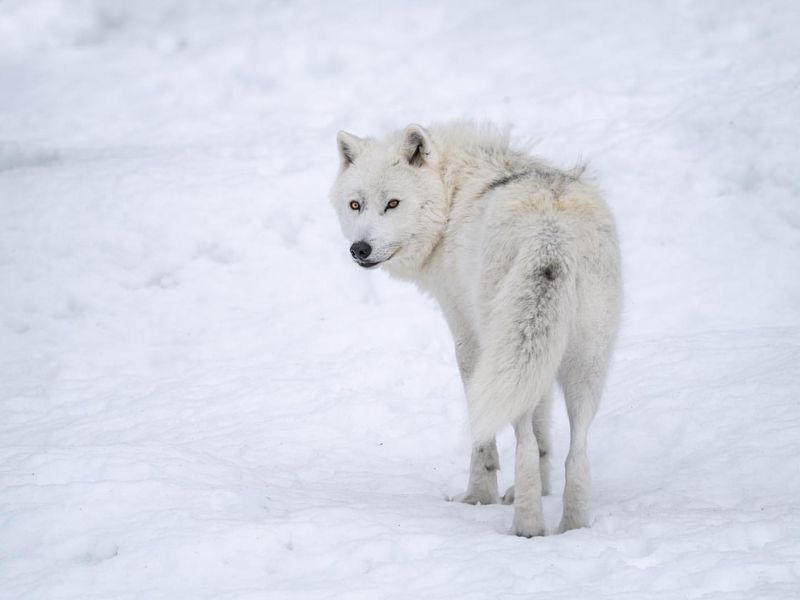
The pristine color acts as natural camouflage in the snow-covered landscapes, making these wolves nearly invisible to predators and prey alike. This unique adaptation helps them hunt effectively and evade potential threats. Imagine trying to spot one amidst a blizzard; it’s like finding a snowflake in a snowstorm!
The white fur isn’t just about aesthetics; it plays a vital role in their daily survival. The thickness of their coat is another marvel. Designed to withstand temperatures that would leave most mammals shivering, an Arctic wolf’s fur consists of two layers. The dense undercoat provides insulation, while the longer guard hairs repel moisture.
This combination ensures they stay warm and dry even in the bitter cold. You could say their wardrobe is truly winter-ready! Beyond functionality, their fur serves as a communication tool.
Subtle maneuvers of their tails and hackles send signals to pack members, reinforcing their social bonds. It’s a dress code with multifaceted purposes, blending fashion with function in a way only nature could orchestrate.
2. The Nomadic Lifestyle
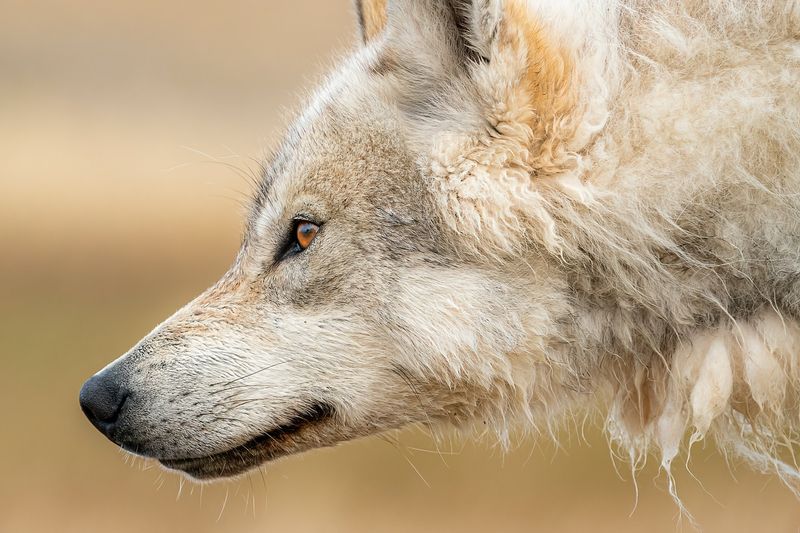
Arctic wolves are the ultimate nomads of the animal kingdom. Unlike their more sedentary relatives, these wolves are constantly on the move, traversing the vast icy tundra in search of food and shelter. This nomadic lifestyle is a direct response to the harsh environment they inhabit, where resources are scarce and conditions are unforgiving.
The pack’s movement is a well-coordinated symphony. Each wolf plays a role, from the alpha leading the way to the scouts searching for potential prey. Their adaptability is a testament to their resilience, as they travel hundreds of miles annually. This constant motion not only ensures their survival but strengthens their pack bonds, as they rely heavily on each other for protection and hunting success. In this dance of survival, teamwork is paramount.
The pack’s social structure is as fluid as their movements, with roles shifting based on the needs of the moment. It’s a dynamic existence that highlights the Arctic wolf’s ability to thrive in an ever-changing, challenging world. Truly, they are wanderers at heart, with the Arctic as their playground.
3. Adaptations For Extreme Cold
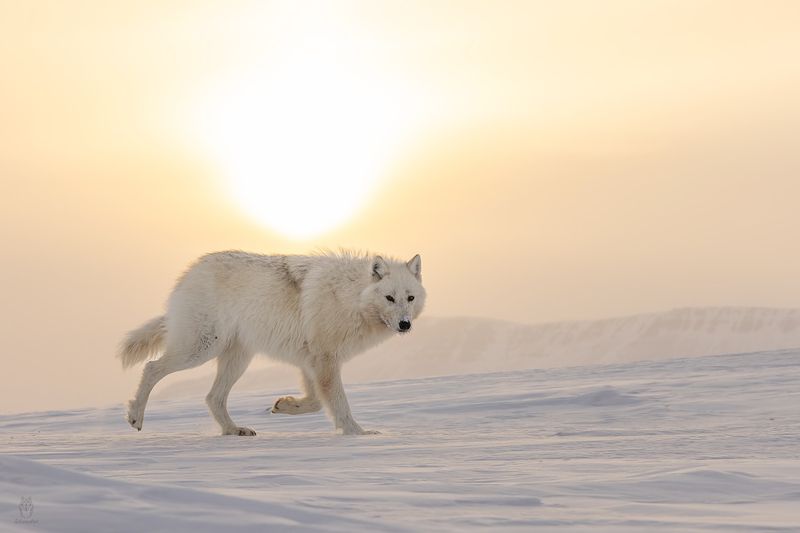
When it comes to braving the cold, Arctic wolves are equipped with some of nature’s most ingenious adaptations. Their paws, for instance, are like snowshoes designed by evolution. Large and well-padded, they distribute weight evenly, allowing these wolves to tread lightly over soft snow without sinking.
Additionally, the thick fur covering their paws provides insulation against the icy ground, making every step a warm one. The wolves’ bodies are compact and muscular, minimizing heat loss. This anatomical design, combined with robust cardiovascular systems, ensures they maintain body heat in freezing temperatures.
Their ears are another strategic feature; short and rounded, they reduce surface area, which helps retain warmth. It’s as if every aspect of their physiology is in a constant battle against the chill. Even their metabolic processes are fine-tuned for cold weather. During the long Arctic winters, food can be scarce, so Arctic wolves have evolved to survive on fewer calories, utilizing fat reserves efficiently.
These adaptations showcase the marvel of evolution, allowing Arctic wolves to not just survive but flourish in one of Earth’s most extreme climates.
4. Arctic Wolf Packs
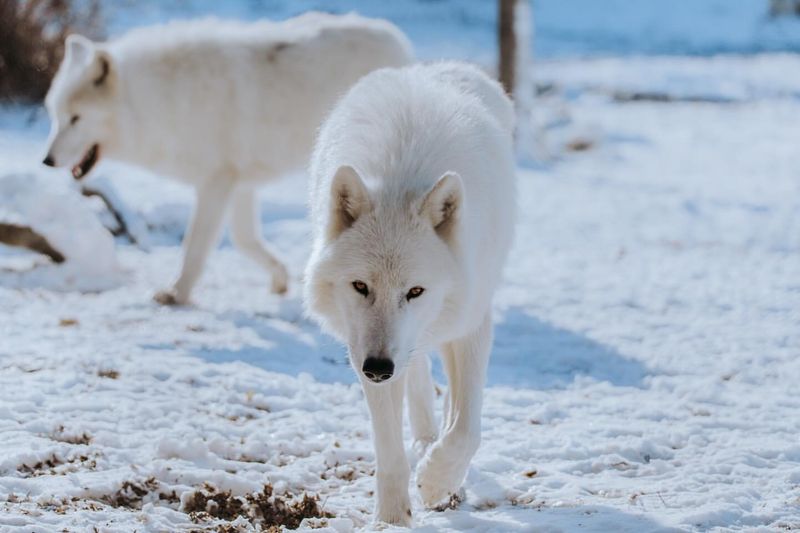
Life in an Arctic wolf pack is a complex tapestry of relationships and roles. These packs are not mere collections of individuals; they are tightly-knit families, each with its own set of rules and hierarchies. At the core of this social structure is the alpha pair, the leaders who guide the pack’s activities and maintain order. Their leadership is not just about dominance but also about nurturing and protection.
Communication within the pack is sophisticated, involving vocalizations, body language, and even facial expressions. A playful nip or a stern growl can convey a multitude of messages, from affection to admonition. This intricate social language strengthens the bonds between pack members, ensuring cooperation in hunting and raising offspring. Within this social framework, every wolf has a role, whether as a hunter, scout, or caregiver. These roles can shift, allowing the pack to adapt to new challenges.
It’s a dynamic, ever-evolving society that mirrors the fluidity of the Arctic environment. In the end, it’s their unity and cooperation that allow Arctic wolves to thrive in a world where survival is a daily challenge.
5. Unique Hunting Techniques
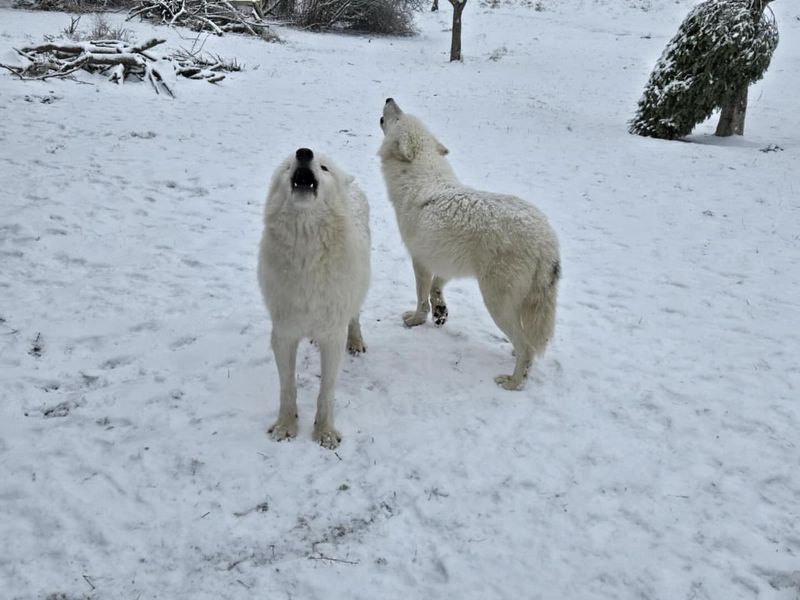
Their hunting techniques are a masterclass in strategy and cooperation, reflecting their intelligence and social cohesion. These wolves primarily hunt large prey like caribou and muskoxen, requiring teamwork and precise coordination. The hunt often begins with scouts identifying potential prey. The pack then moves in formation, using the element of surprise to their advantage.
Each wolf has a role, from leading the chase to flanking the prey, creating a coordinated attack that increases their chances of success. It’s a bit like watching a well-rehearsed dance, where every move is calculated and deliberate.
Once the prey is captured, the feast follows a strict hierarchy. The alpha pair eats first, followed by the rest of the pack. This ensures that the leaders, who are responsible for the pack’s success, are well-nourished.
The hunting prowess of Arctic wolves is a testament to their adaptability, intelligence, and the strength of their social bonds.
6. The Arctic Wolf’s Haunting Howl
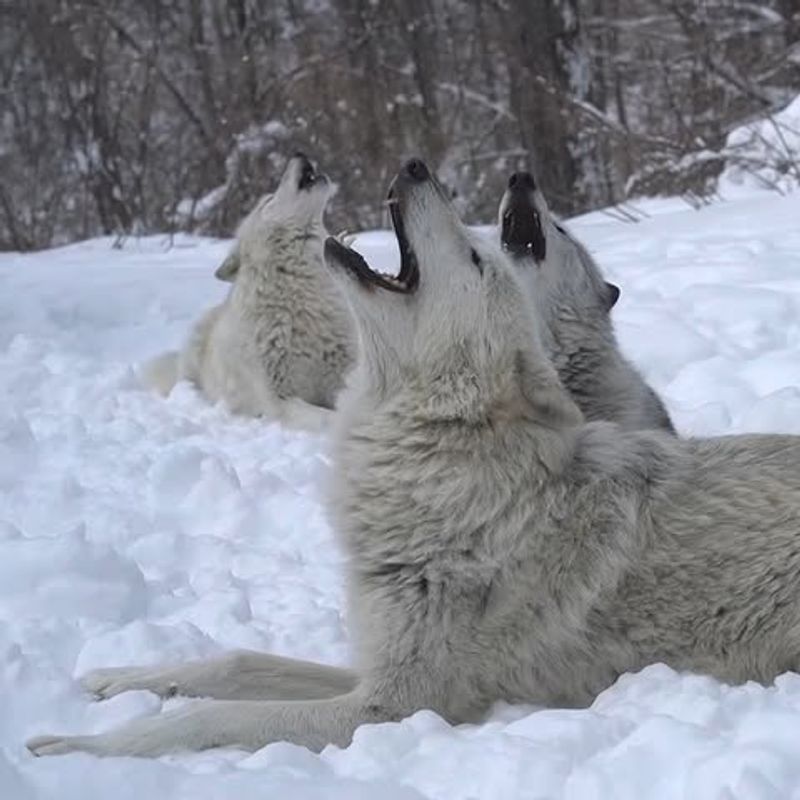
The howl of an Arctic wolf is one of the most hauntingly beautiful sounds in nature. It’s both a communication tool and a declaration of territory, echoing across the vast tundra like a ghostly serenade. These vocalizations can be heard over long distances, serving as a beacon to other pack members and a warning to rivals. Each howl is unique, carrying information about the wolf’s identity and emotional state.
The chorus of a pack howling together is a complex symphony, where individual voices blend into a harmonious soundscape. In the eerie silence of the Arctic night, this natural concert is nothing short of magical, creating an atmosphere both eerie and enchanting.
But the howl isn’t just about communication; it’s also a bonding experience. When a pack howls together, it reinforces their unity, strengthening the ties that bind them. It’s a reminder that, even in the desolate wilderness, these wolves are never truly alone.
The haunting howl of the Arctic wolf is a testament to their resilience, communication skills, and the deep social connections they share.
7. Arctic Wolf Pups
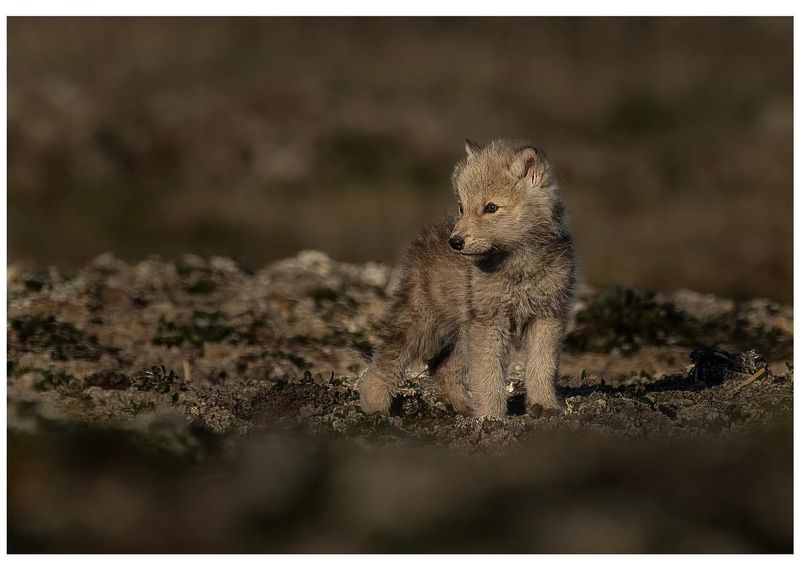
In the harsh world of the Arctic, the birth of wolf pups is a hopeful reminder of life’s resilience. Born in early spring, when the brief Arctic thaw begins, these pups are tiny, blind, and utterly dependent on their parents. Their arrival marks a period of intense activity as the pack rallies to ensure their survival. The pups spend their first weeks in a den, safe from the treacherous elements and potential predators.
Their early days are filled with play, which is not just fun but a crucial part of their development. Through play, they learn essential skills like hunting, social interaction, and even conflict resolution. As they grow, the pack’s cooperative nature shines. All members contribute to the pups’ upbringing, from feeding them regurgitated food to teaching them the ways of the wild.
This collective effort ensures that the next generation is well-prepared for the challenges of Arctic life. The playful antics of Arctic wolf pups are a testament to the enduring cycle of life and the strength of family bonds in the animal kingdom.
8. The Mysterious White Coat
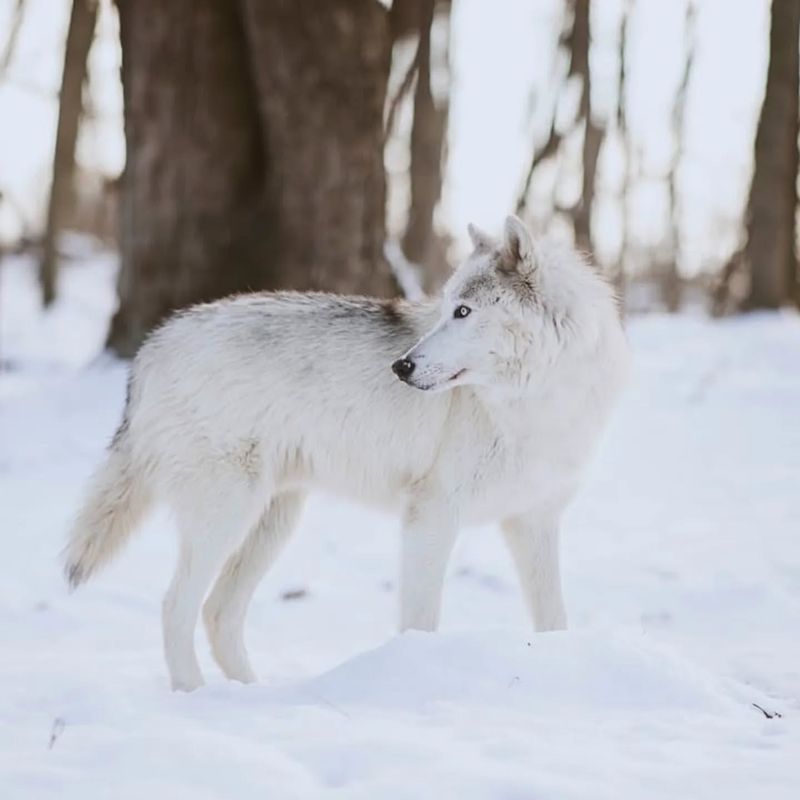
This stunning fur not only provides camouflage in the snowy landscape but also reflects sunlight, helping to regulate body temperature. It’s as if these wolves wear cloaks woven from the very fabric of their environment. Underneath this seemingly simple white lies a complex structure.
The fur’s reflective properties enhance their ability to blend into their surroundings, making it difficult for prey to spot them until it’s too late. This camouflage is vital for hunting success and survival in the barren, icy wilderness. But the white coat holds more than practical value; it carries an air of mystique. In many cultures, the Arctic wolf is a creature of legend, embodying the spirit of the wilderness.
Its fur, shimmering under the Arctic sun, captures the imagination, inspiring tales of ghostly apparitions and wild, untamed beauty. The white coat of the Arctic wolf is a testament to the delicate balance between beauty and functionality in nature.
9. The Role In Their Ecosystem
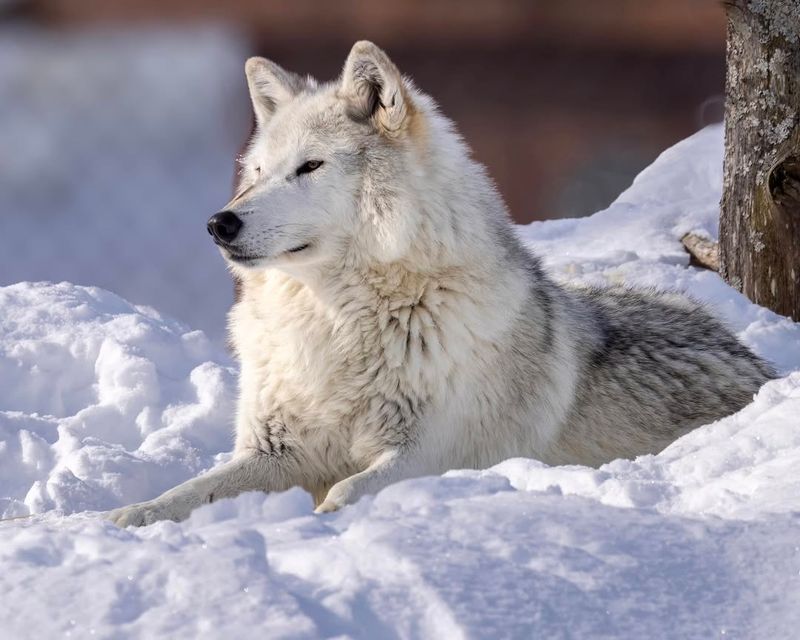
As apex predators, they help control the populations of herbivores such as caribou and muskoxen. This regulation prevents overgrazing, maintaining the health of the tundra vegetation, which is crucial for the entire food web. Their presence also influences the behavior and distribution of prey species. By keeping herbivore numbers in check, Arctic wolves ensure that plant life can regenerate, supporting a diversity of species.
This cascading effect highlights the interconnectedness of the Arctic ecosystem, where every species plays a part in its overall health. Beyond population control, Arctic wolves also contribute to the nutrient cycle. Their kills provide food for scavengers like ravens and arctic foxes, which in turn support other wildlife.
This complex web of interactions underscores the importance of the Arctic wolf, not just as a predator but as a keystone species whose impact reverberates throughout the ecosystem. They are, quite literally, the architects of their environment’s balance.
10. Surviving The Arctic’s Long Winters
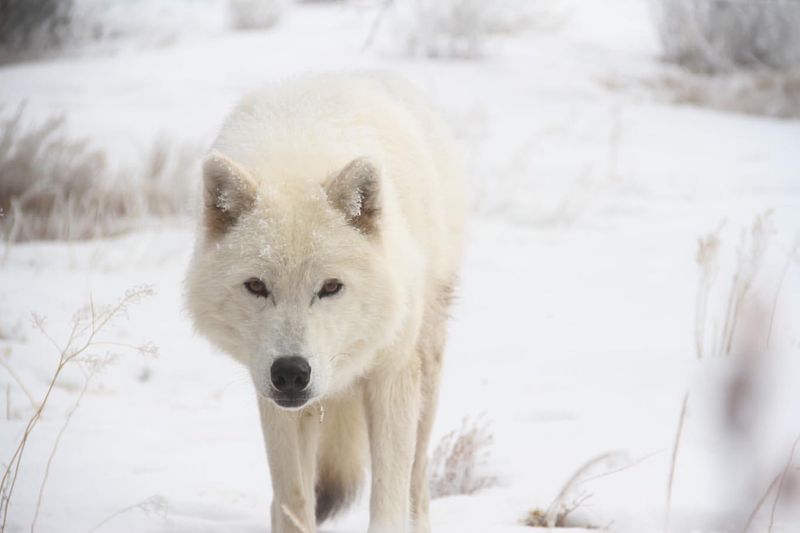
Winter in the Arctic is not just a season; it’s a formidable test of survival. For the Arctic wolf, enduring these long, frigid months requires resilience, resourcefulness, and a touch of tenacity that few creatures possess. As temperatures plummet and the landscape becomes a barren expanse of snow and ice, these wolves employ every trick in nature’s book to stay alive.
Their thick, layered fur is their first line of defense, providing the necessary insulation to ward off the biting cold. Beyond physical adaptations, Arctic wolves exhibit behavioral strategies, such as digging dens in the snow to shield against the harshest elements. These shelters offer refuge and warmth, transforming the frozen ground into a temporary home.
Survival is also about strategic foraging. The wolves’ keen sense of smell aids them in locating prey beneath the snow, while their pack’s coordinated hunting tactics increase their chances of a successful kill.
Through a combination of physical and social adaptations, Arctic wolves not only survive the relentless winter but emerge poised to thrive when the thaw finally arrives.
11. Arctic Wolves’ Relationship With Indigenous Peoples
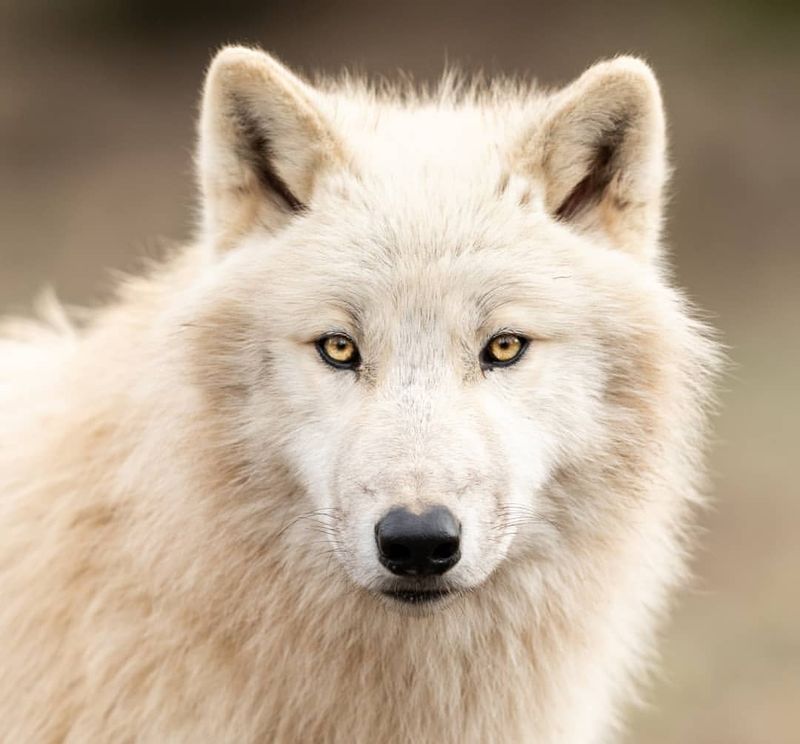
The relationship between Arctic wolves and Indigenous peoples is one of respect and mutual influence. For centuries, these wolves have played a significant role in the cultural and spiritual lives of Indigenous communities living in the Arctic regions. They are seen as both teachers and symbols of survival, embodying the strength and resilience required to thrive in such a harsh environment.
Many Indigenous legends and stories feature the Arctic wolf, highlighting its importance in their folklore. These narratives often depict the wolf as a wise and resourceful creature, teaching lessons about cooperation, perseverance, and adaptability. In return, Indigenous peoples have learned from the wolves, adopting similar strategies in their own survival practices.
In some cultures, the Arctic wolf is viewed as a guardian spirit, watching over the land and its people. This reciprocal relationship reflects a deep appreciation for the natural world, where humans and animals coexist in harmony.
Through their interactions with Arctic wolves, Indigenous peoples have gained valuable insights into the rhythms of nature, fostering a connection that continues to influence their way of life today.
12. Threats To The Arctic Wolf Population
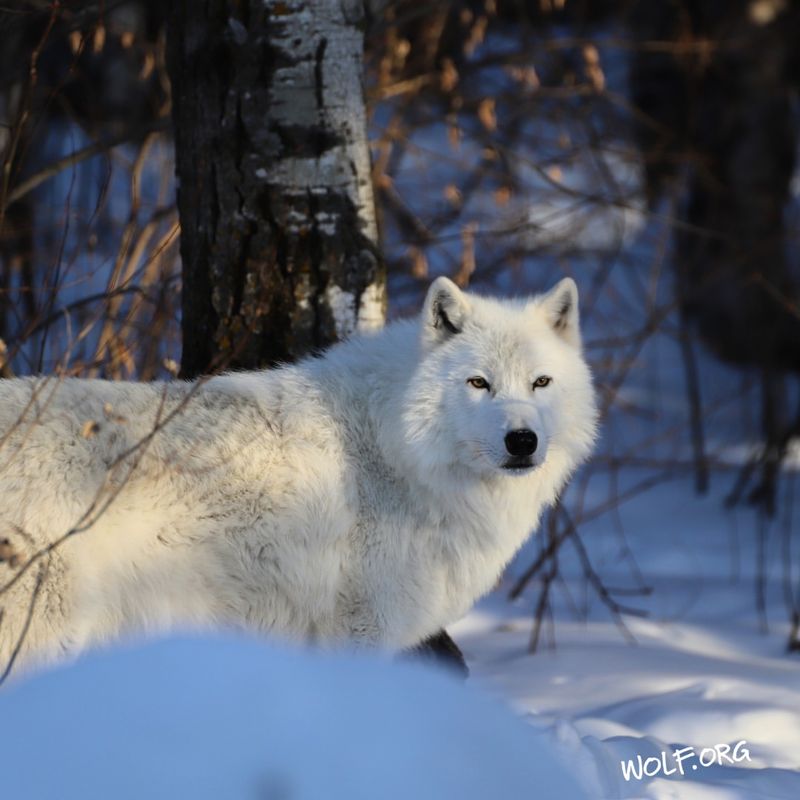
Despite their adaptability, Arctic wolves face several threats that jeopardize their future. Climate change is at the forefront, altering the delicate balance of their ecosystem. As temperatures rise, the ice melts, leading to habitat loss and a shift in prey availability. These changes force wolves to travel further and work harder to find food, straining their energy reserves.
Human activities also pose significant risks. Industrial development in the Arctic region, including mining and oil exploration, disrupts wolf habitats and increases human-wildlife conflicts. Additionally, the potential for disease transmission from domestic dogs brought into the area is a growing concern, as it can have devastating effects on wolf populations.
Conservation efforts are crucial to ensuring the survival of Arctic wolves. Protecting their habitat, regulating industrial activities, and monitoring for diseases are essential steps in safeguarding these magnificent creatures.
As stewards of the planet, it is our responsibility to address these challenges, ensuring that Arctic wolves continue to roam the tundra for generations to come.
13. Arctic Wolves In Popular Culture
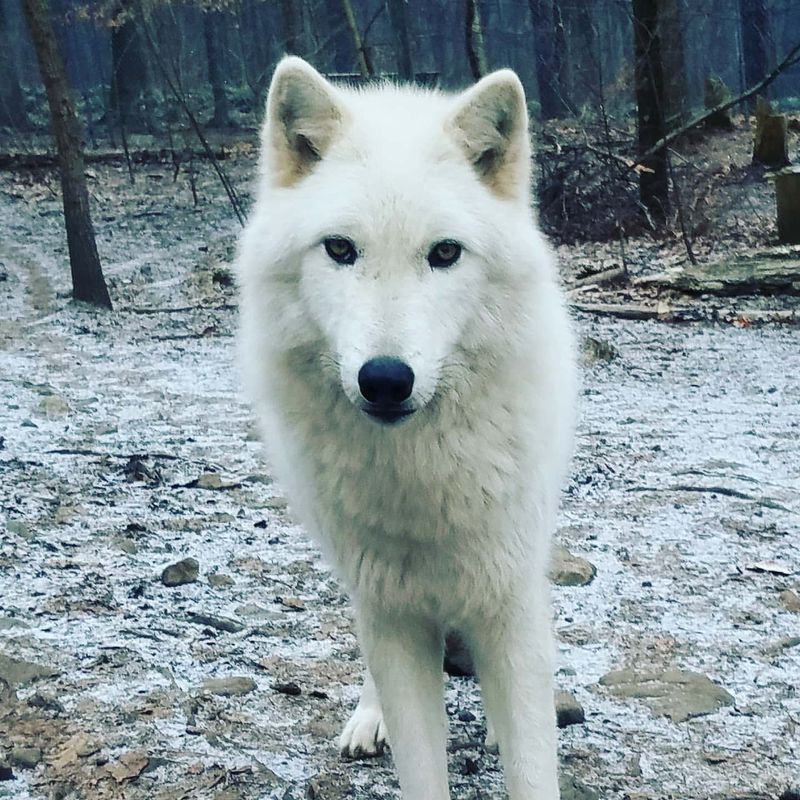
Their striking appearance and mysterious nature make them ideal subjects for stories, art, and film, where they often symbolize wilderness, freedom, and the untamed spirit of nature. In literature, Arctic wolves are frequently portrayed as noble and wise, guiding characters through harsh landscapes with their keen instincts and survival skills.
These narratives highlight the wolves’ role as guardians and mentors, inspiring awe and respect for the natural world. Their presence in children’s books and fairy tales adds a touch of magic, captivating young minds with tales of adventure and bravery.
Beyond stories, Arctic wolves have become iconic symbols in various forms of media, from wildlife documentaries to animations. Their image evokes a sense of wonder and curiosity, drawing attention to the beauty and fragility of their Arctic home.
As cultural ambassadors, Arctic wolves help raise awareness about the importance of conservation, reminding us of the rich tapestry of life that thrives in the world’s most remote corners.

